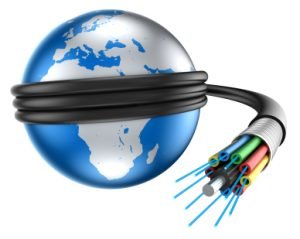DAFTAR ISI
PELATIHAN FIBER OPTIC SYSTEM
DESKRIPSI
The experience in telecommunications environment is the prerequisite those who seek this course program. In this course, you gain the practical skills and confidence to implement fiber-optic technologies in your organization. Through extensive hands-on exercises, you learn to build, test, troubleshoot and maintain fiber-optic systems
TUJUAN
1. Measuring fiber characteristics
2. Verifying and troubleshooting with lost test set and OTDR
3. Building, testing and repairing connectors and splices
4. Selecting the appropriate fibers and cables to meet your needs
5. Identifying and working around fiber-optic installation problems
6. Predicting design performance and verifying after the actual installation
7. Making sense of OTDR traces
MATERI
1. Fiber Types and Materials
How fibers guide light
Differentiating between core and cladding
Index of refraction
Light rays and light waves
Singlemode fiber (SMF) and multimode fiber (MMF)
How SMF and MMF are different
Choosing fiber based upon your communication needs
Trading ease of use for highest performance
Planning for the future
2. Specifying Fibers
Loss and attenuation of fibers
Understanding how loss is measured
Inherent loss factors: scattering and absorption
The effect of light color on loss
Using a loss test set
Budgeting the loss
Bandwidth: the capacity for information
Causes of distortion
Dispersion
Modes
When bandwidth is an issue
Physical sizes of fiber
Why fibers have different sizes
The impact of numerical aperture
Dealing with manufacturing tolerances
3. Using Fiber Optic Transmitters and receivers
Light sources
1st, 2nd and 3rd “windows”
LEDs vs. lasers
Wavelength division multiplexing
Detecting light with photodiodes
Wavelength agility
How to factor in speed
What to look for in test instrumentation
Responsivity : the calibration factor
4. Designing Cable Plants
Indoor cable
Structural issues: connection, identification and installation
Abiding by the fire code
Why tight buffer is common
Outdoor cable
Underground vs. aerial cable
Loose tube
Ribbon
Slotted core
Avoiding moisture contamination
Benefiting from structured cabling options
Surveying structured cabling standards
Vendor interpretations
5. Verifying Cable Installations: Testing Tips and Techniques
Acceptance testing
Testing continuity: the first step
Examining cable plant loss
Locating mismatch problems
Troubleshooting fiber systems
Knowing when to troubleshoot
Common steps to identify the problem
Sources of difficulty you should know
6. OTDR : Optical Time Domain Reflectometer
Testing fiber paths with OTDR
Using the OTDR before, during and after cable
installation
Safety concerns
Interpreting OTDR traces
Capabilities and limitations of OTDR
Relying on your own interpretation
7. Selection Connectors and Splices
Quality factors
Throughput and return loss
Cost differentials
Durability
Fresnell reflection and index matching
Mechanical and fusion splices
When to consider fusion splicing
Pros and cons of mechanical splicing
Identifying different types of connectors (ST, SC, FC, SMA, Biconic, D4, Non-ontact and physical contact/PC)
8. Building Connectors and Splices
· Practical fiber termination
· Installing ST connectors
· Joining fibers with mechanical splices
· Tuning splices
· Repairing connectors
9. Cutting Edge Technologies
· Advanced fiber-optic components
· Fiber couplers
· Optical amplifiers
· Wavelength Division Multiplexers (WDM)
· Advantages of specialty fibers
IN THIS TRAINING, YOU WILL LEARN HOW TO
1. Implement fiber-optic technologies within your organization
2. Match your fiber-optic system to your communications needs
3. Test, troubleshoot, maintain and upgrade fiber-optic systems
4. Perform acceptance and maintenance tests using a loss set and OTDR
5. Fabricate fiber-optic splices and connectors
6. Ensure that design specifications will work in the “real world”
PESERTA
Technicians, installers, supervisors, engineers, designers and contractors
INSTRUKTUR
Dr. Ir. Ian Josef Matheus Edward, MT and Team
Jadwal Informasi Training Tahun 2024 :
16 -17 Januari 2024
13 – 14 Februari 2024
5 – 6 Maret 2024
24 – 25 April 2024
21 – 22 Mei 2024
11 – 12 Juni 2024
16 – 17 Juli 2024
20 – 21 Agustus 2024
17 – 18 September 2024
8 – 9 Oktober 2024
12 – 13 November 2024
17 – 18 Desember 2024
Jadwal training diatas dapat berubah sewaktu-waktu. Untuk memastikan jadwal pelatihan fix running di tahun ini silahkan konfirmasi jadwal dan lokasinya melalui whatsapp marketing kami
LOKASI DAN INVESTASI
Lokasi Pelatihan Diotraining.com :
- Yogyakarta, Hotel Dafam Fortuna Grande Malioboro (6.000.000 IDR / participant)
- Jakarta, Hotel Amaris Kemang (6.500.000 IDR / participant)
- Bandung, Hotel Neo Dipatiukur(6.500.000 IDR / participant)
- Bali, Hotel Ibis Kuta (7.500.000 IDR / participant)
- Lombok, Hotel Jayakarta (7.500.000 IDR / participant)
LOKASI DAN INVESTASI
Investasi Pelatihan tahun 2024 ini :
Investasi pelatihan selama tiga hari tersebut menyesuaikan dengan jumlah peserta (on call). *Please feel free to contact us.
Apabila perusahaan membutuhkan paket in house training, anggaran investasi pelatihan dapat menyesuaikan dengan anggaran perusahaan.
Fasilitas Pelatihan :
- Airport pickup service (Gratis Antar jemput Hotel/Bandara Khusus Bali dan Bandung)
- Akomodasi Peserta ke tempat pelatihan .
- Module / Handout Softcopy ataupun Hardcopy
- Flashdisk atau Link Download Material
- Sertifikat dan dokumentasi
- Bag or bagpackers (Tas Training)
- Training Kit (Blocknote, ATK, etc)
- 2x Coffee Break & 1 Lunch, Dinner
- Souvenir Exclusive
Jadwal Pelatihan masih dapat berubah, mohon untuk tidak booking transportasi dan akomodasi sebelum mendapat konfirmasi dari Marketing kami. Segala kerugian yang disebabkan oleh miskomunikasi jadwal tidak mendapatkan kompensasi apapun dari kami.











